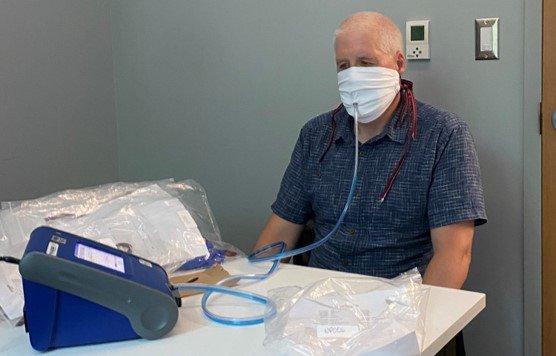Knit Fabrics
Knit fabrics should not be able to stretch over the nose and mouth
Knit fabrics are comfortable and popular with mask makers. Because they stretch, they offer the possibility of making the whole mask, including the earloops, from a single piece of material. We recommend that masks that use knits have stitching, edging, or incorporate a non-stretching material (such as polypropylene) that prevents the filtration surface from stretching when worn. This is the area over the nose and mouth, where filtration occurs. Stretching this portion of the filtration surface will open up the holes and reduce the ability of the material to trap particles. A home-made mask, made from T-shirt material, with edge stitching, provided useful levels of filtration in tests of inward and outward protection (reduction of particles reaching the wearer and the environment, respectively).
Photo: Mask constructed from 100% cotton knit fabric (T shirt material) undergoing testing with a Portacount at McMaster University
